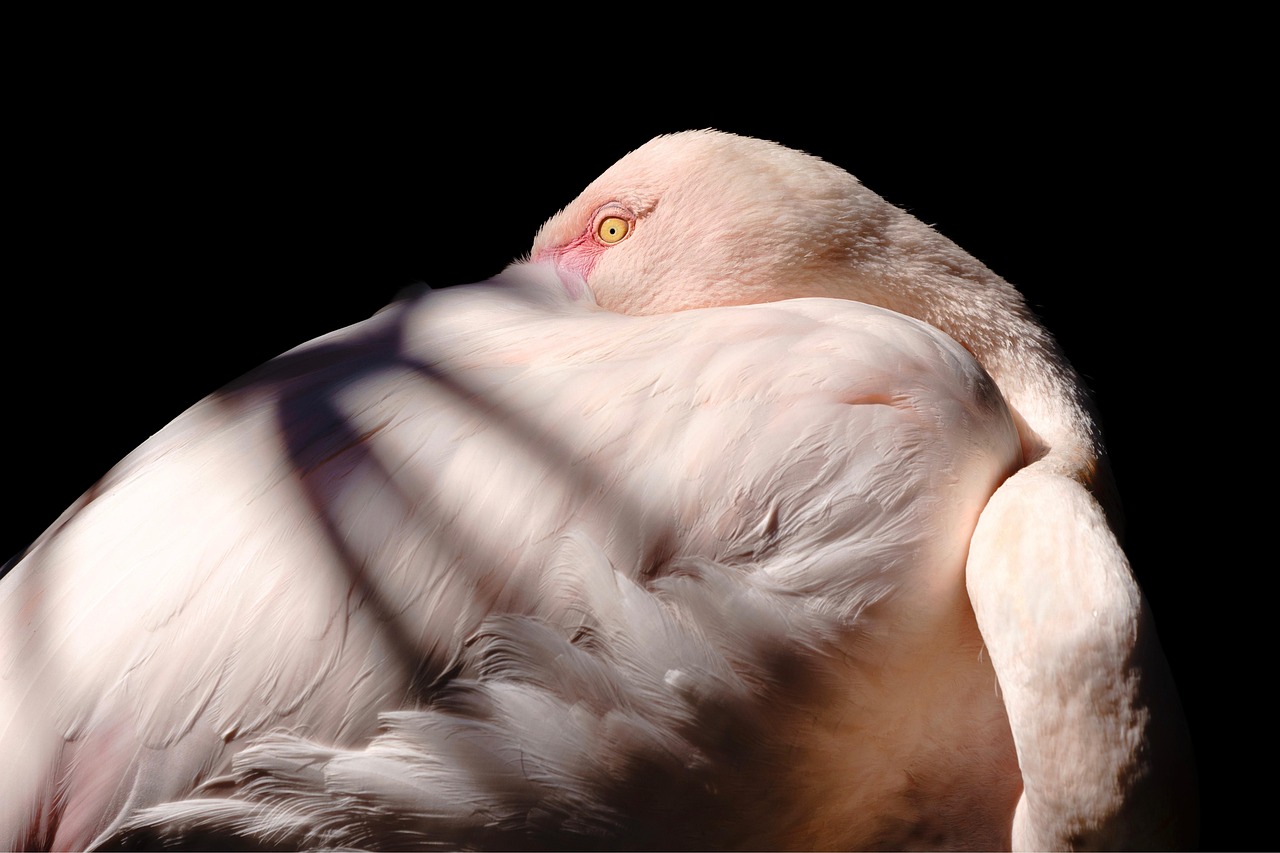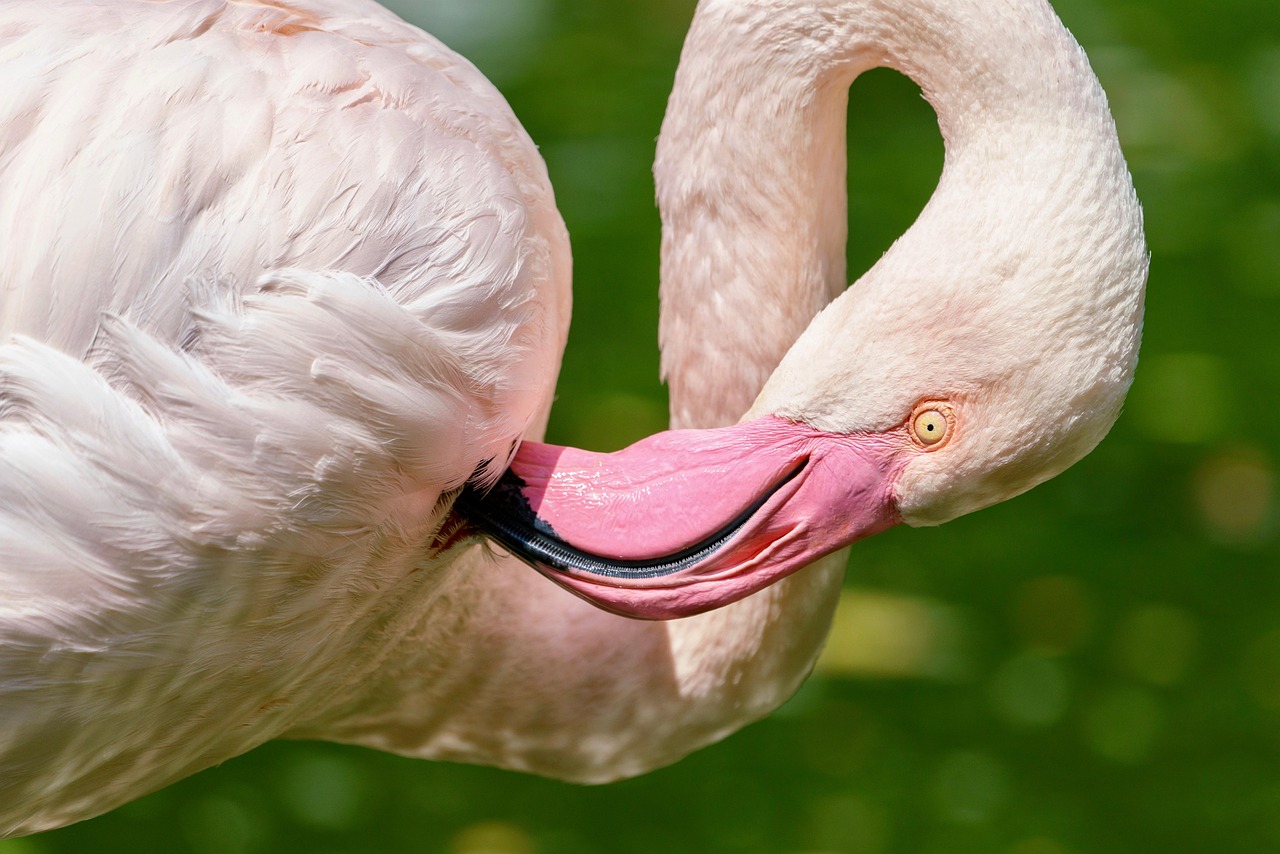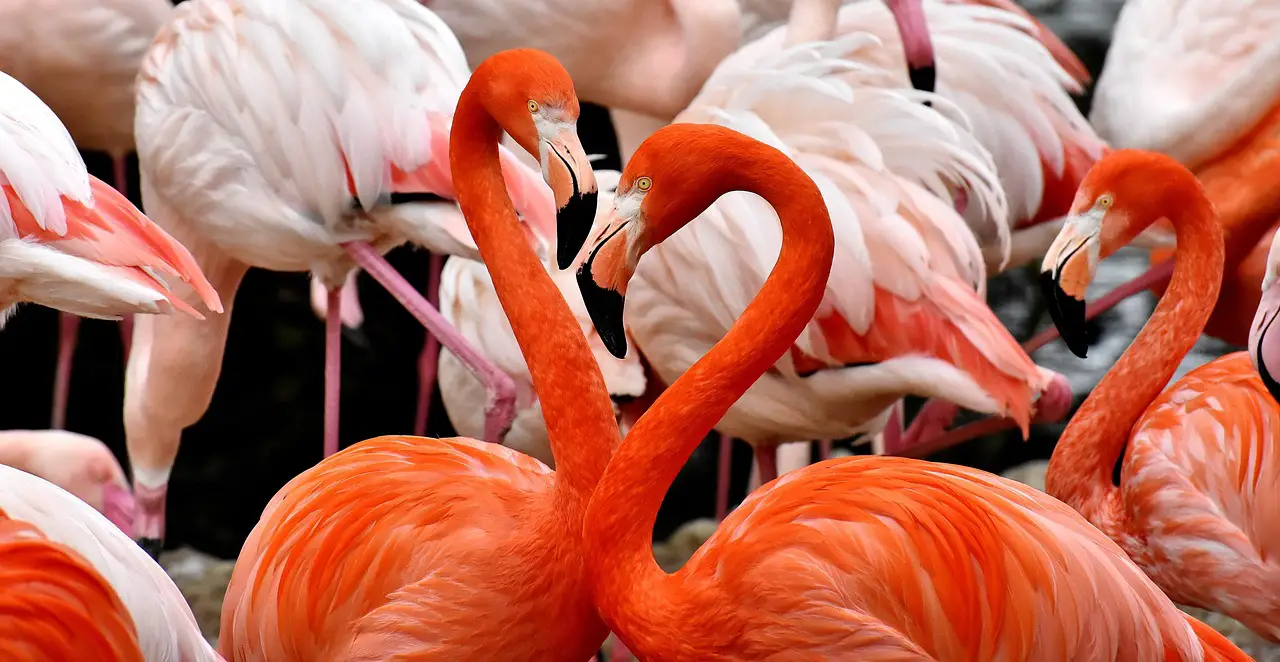The Flamingo Tree, known for its vibrant pink foliage and stunning appearance, has a moderate growth rate. Under ideal conditions, it can grow between 1 to 3 feet per year, making it a popular choice for ornamental gardening.
The Flamingo Tree, or Delonix regia, is a tropical tree admired for its strikingly beautiful flowers and lush foliage. Originating from Madagascar, it has spread to many regions worldwide due to its aesthetic appeal and adaptability. In ornamental gardening, the Flamingo Tree offers not only visual beauty but also shade. Understanding its growth rate is essential for gardeners looking to incorporate this tree into their landscapes.

The growth rate of the Flamingo Tree can vary significantly based on several environmental factors. These factors include the quality of soil, availability of sunlight, water supply, and overall climate conditions. Typically, the Flamingo Tree thrives in warm climates and requires full sun for optimal growth. In well-drained soil with adequate nutrients, the tree can flourish and reach its full potential.
Key Factors Affecting Growth Rate
Several key factors influence how fast a Flamingo Tree will grow. Here are some of the main considerations:
- Soil Quality: Nutrient-rich, well-draining soil promotes healthy root development.
- Sunlight: Full sun exposure is crucial for optimal growth.
- Watering: Consistent watering helps maintain moisture but avoid overwatering to prevent root rot.
- Temperature: Ideal temperatures range from 70°F to 90°F, as colder climates can slow growth.
The Flamingo Tree’s growth rate can also be impacted by pruning techniques. Proper pruning can encourage bushier growth and promote flowering. Gardeners should prune the tree in late winter or early spring before new growth begins. This timing helps shape the tree while minimizing stress.

Growth Rate Comparison with Other Ornamental Trees
When comparing the Flamingo Tree’s growth rate to other popular ornamental trees, it is helpful to understand how it stacks up against them. The following table provides an overview of the average growth rates of various ornamental trees:
| Tree Species | Average Growth Rate (Feet per Year) |
|---|---|
| Flamingo Tree (Delonix regia) | 1 – 3 |
| Japanese Maple (Acer palmatum) | 1 – 2 |
| Crape Myrtle (Lagerstroemia indica) | 3 – 5 |
| Red Maple (Acer rubrum) | 2 – 3 |
This table illustrates that while the Flamingo Tree has a moderate growth rate, other trees like the Crape Myrtle may grow faster under similar conditions. However, the Flamingo Tree’s unique characteristics often make it a preferred choice despite its slower growth rate.
In summary, understanding the growth rate of the Flamingo Tree in ornamental gardening is vital for successful cultivation. By considering various factors such as soil quality, sunlight exposure, and climate conditions, gardeners can create an environment that fosters healthy growth. Each gardener’s experience may differ based on their specific location and care practices.

As with many aspects of gardening, patience is key when growing a Flamingo Tree. With proper care and attention, this beautiful tree can become a stunning focal point in any garden space.
Optimal Conditions for Flamingo Tree Growth
To maximize the growth rate of the Flamingo Tree, it is essential to provide optimal conditions. These conditions not only include sunlight and soil quality but also factors such as humidity and spacing. Understanding these elements can significantly enhance the tree’s development.
Sunlight Requirements
The Flamingo Tree thrives best in full sunlight, requiring at least six hours of direct sunlight each day. Insufficient light can lead to stunted growth and fewer flowers. Gardeners should consider planting the Flamingo Tree in a location that receives abundant sunlight throughout the day.

Soil Quality
The tree prefers sandy or loamy soil that drains well. Soil with good drainage prevents water from pooling around the roots, which can cause root rot. Additionally, soil enriched with organic matter can improve nutrient availability and support healthy growth.
Humidity and Watering Needs
Humidity plays a crucial role in the Flamingo Tree’s growth. This tree flourishes in humid environments, typical of tropical regions. If grown in dryer areas, it is important to provide regular watering, especially during dry spells. Here are some key watering tips:
- Water deeply but infrequently to encourage deep root growth.
- Avoid waterlogging by ensuring proper drainage in pots and soil.
- Monitor humidity levels, especially in indoor or controlled environments.
Pest and Disease Management
Like any ornamental plant, the Flamingo Tree may be susceptible to various pests and diseases. Early identification and management of these issues can help maintain the tree’s health and growth rate.
Common Pests
Some common pests that may affect the Flamingo Tree include:
- Aphids: These small insects can cluster on new growth, sucking sap and causing leaf distortion.
- Scale Insects: Scale can appear as small bumps on branches and leaves, leading to wilting and yellowing foliage.
- Spider Mites: Often thrive in dry conditions, spider mites can cause stippling on leaves and webbing.
Disease Prevention
In addition to pests, diseases such as root rot and leaf spot may affect Flamingo Trees. Here are some preventive measures:
- Ensure proper air circulation around the tree.
- Avoid overwatering and waterlogged conditions.
- Regularly inspect leaves for signs of disease or pest damage.
Fertilization Practices
Proper fertilization can greatly influence the growth rate of the Flamingo Tree. The right nutrients support healthy foliage and vibrant flowering. Here are some guidelines for fertilizing:
Types of Fertilizers
Gardeners can choose between organic and synthetic fertilizers. Each type has its benefits:
- Organic Fertilizers: These include compost, well-rotted manure, or specific organic blends. They improve soil health and provide slow-release nutrients.
- Synthetic Fertilizers: These offer a quick nutrient boost but may require more caution to avoid over-fertilizing.
Application Timing
The best times to fertilize a Flamingo Tree are:
- In early spring as new growth begins.
- Mid-summer to support flowering.
Applying fertilizer during these times ensures that the tree receives adequate nutrients when it needs them most.
Growth Tracking and Care Routine
Keeping track of the Flamingo Tree’s growth is essential for effective care. Gardeners should establish a routine that includes regular monitoring, watering, and fertilizing. Here are some tips for tracking growth:
- Measure growth height annually to observe changes over time.
- Keep a journal of care practices, including watering schedules and fertilization dates.
- Take note of any pest or disease issues to address them promptly.
This proactive approach will help ensure that the Flamingo Tree reaches its optimal growth potential and remains a beautiful addition to any garden.
Landscaping Ideas with Flamingo Trees
The Flamingo Tree, with its striking appearance and vibrant flowers, can serve as an eye-catching focal point in various landscaping designs. Gardeners can incorporate this tree into their gardens in a variety of creative ways, enhancing both aesthetic appeal and functionality.
Focal Points in Garden Design
Using Flamingo Trees as focal points can draw attention and create visual interest. Here are some strategies to consider:
- Central Positioning: Plant the Flamingo Tree at the center of a circular garden bed. Surround it with flowering plants or ornamental grasses to enhance its beauty.
- Mixed Borders: Use the Flamingo Tree as part of a mixed border, combining it with other shrubs and perennials for a lush, layered look.
- Pathway Accents: Place Flamingo Trees along pathways or driveways to create a dramatic entrance that welcomes visitors.
Creating Shade Areas
The Flamingo Tree’s broad canopy provides excellent shade, making it ideal for creating comfortable outdoor spaces. Here are some ideas:
- Relaxation Zones: Position seating areas or hammocks under the tree’s shade for a tranquil retreat in your garden.
- Outdoor Dining Spaces: Create an outdoor dining area under the tree, where family and friends can enjoy meals in a comfortable environment.
- Play Areas: If you have children, consider placing play equipment under the tree’s canopy to provide protection from the sun.
Companion Plants for Flamingo Trees
Choosing the right companion plants can enhance the beauty of the Flamingo Tree while ensuring compatibility in terms of growth conditions. Here are some ideal companions:
Flowering Plants
Pairing the Flamingo Tree with colorful flowering plants can create a vibrant garden scene. Some excellent choices include:
- Hibiscus: With large, showy blooms, hibiscus complements the Flamingo Tree’s flowers beautifully.
- Salvia: This drought-tolerant plant attracts pollinators and adds beautiful color contrast.
- Lantana: Known for its bright clusters of flowers, lantana adds vibrancy and works well in sunny areas.
Foliage Plants
In addition to flowering plants, incorporating foliage plants can add texture and depth to your garden:
- Ferns: The delicate fronds of ferns create a lovely contrast against the Flamingo Tree’s bold leaves.
- Hostas: Ideal for shaded areas, hostas can thrive beneath the tree’s canopy.
- Ornamental Grasses: Grasses like miscanthus or fountain grass can add movement and softness to the landscape.
Seasonal Care for Flamingo Trees
Caring for Flamingo Trees involves different tasks throughout the seasons. Understanding these seasonal needs is crucial for maintaining tree health and ensuring optimal growth.
Spring Care
In spring, as new growth begins, it is important to:
- Apply fertilizer to encourage robust growth.
- Inspect for pests and diseases, addressing any issues promptly.
- Prune any dead or damaged branches to promote healthy new growth.
Summer Maintenance
During the summer months, focus on the following care practices:
- Ensure consistent watering, especially during dry spells.
- Watch for signs of heat stress, such as wilting leaves.
- Deadhead spent flowers to encourage additional blooming.
Fall Preparations
As fall approaches, prepare the Flamingo Tree for cooler temperatures:
- Reduce watering frequency as growth slows down.
- Add mulch around the base to retain moisture and protect roots from cold temperatures.
- Prepare for potential pruning after leaf drop to tidy up the tree’s shape.
Winter Care
In winter, care needs shift significantly:
- If you live in a colder climate, consider wrapping young trees with burlap to protect them from frost.
- Avoid heavy pruning during winter; wait until spring when new growth appears.
- If planted in pots, move them to a sheltered location to prevent freeze damage.
Caring for your Flamingo Tree through each season will help ensure its longevity and beauty in your garden landscape.
Challenges in Growing Flamingo Trees
While the Flamingo Tree is a beautiful addition to any garden, it does come with its own set of challenges. Understanding these potential issues can help gardeners prepare and adapt their care routines effectively.
Climate Sensitivity
The Flamingo Tree thrives in warm, tropical climates. Regions that experience frost or prolonged cold spells may find it difficult to grow this tree successfully. Gardeners in cooler areas may need to:
- Choose a protected location that receives maximum sunlight.
- Consider container planting to easily move the tree indoors during colder months.
- Utilize heating mats or frost blankets for additional protection during unexpected cold snaps.
Soil Adaptation
Flamingo Trees prefer well-drained soil, and adapting to less than ideal soil conditions can be challenging. Poor drainage can lead to root rot, which is detrimental to tree health. To combat soil issues:
- Test the soil for pH and nutrient levels before planting.
- Amend the soil with organic matter to improve drainage and nutrient content.
- Consider raised beds or mounds if drainage is a persistent problem.
Pest Management
As mentioned previously, pests such as aphids and scale insects can pose problems for Flamingo Trees. Regular monitoring and prompt action can help manage these pests effectively:
- Introduce beneficial insects like ladybugs that prey on aphids.
- Use insecticidal soap as a natural remedy for pest control.
- Practice good sanitation by removing any fallen leaves or debris that could harbor pests.
Enhancing Aesthetic Appeal
The beauty of the Flamingo Tree lies not only in its vibrant flowers but also in its overall structure and foliage. Enhancing its aesthetic appeal can elevate your garden design:
Seasonal Displays
Consider integrating seasonal blooms and foliage with the Flamingo Tree to create an evolving landscape throughout the year:
- Spring: Pair it with early bloomers like tulips or daffodils for a colorful start.
- Summer: Complement the tree’s vibrant flowers with annuals like petunias or marigolds.
- Fall: Use ornamental grasses and fall-blooming flowers to create texture and contrast against the tree’s foliage as it matures.
Lighting and Nighttime Appeal
Consider using landscape lighting to highlight the Flamingo Tree at night. Uplighting can accentuate its shape and color, creating a magical atmosphere in your garden.
Final Thoughts
The Flamingo Tree is a stunning addition to any ornamental garden, offering vibrant colors and shade. Understanding its growth rate, optimal conditions, and care requirements can help gardeners cultivate this beautiful tree successfully. From providing the right soil and sunlight to managing pests and seasonal care, each step contributes to the tree’s health and beauty.
Incorporating the Flamingo Tree into a landscape design can enhance visual interest and create serene outdoor spaces. By pairing it with complementary plants and considering seasonal displays, gardeners can create dynamic gardens that evolve throughout the year.
Despite the challenges associated with growing Flamingo Trees, the rewards of having this magnificent tree in your garden are worth the effort. With proper care and attention, the Flamingo Tree can flourish, becoming a breathtaking focal point that brings joy and beauty for years to come.
